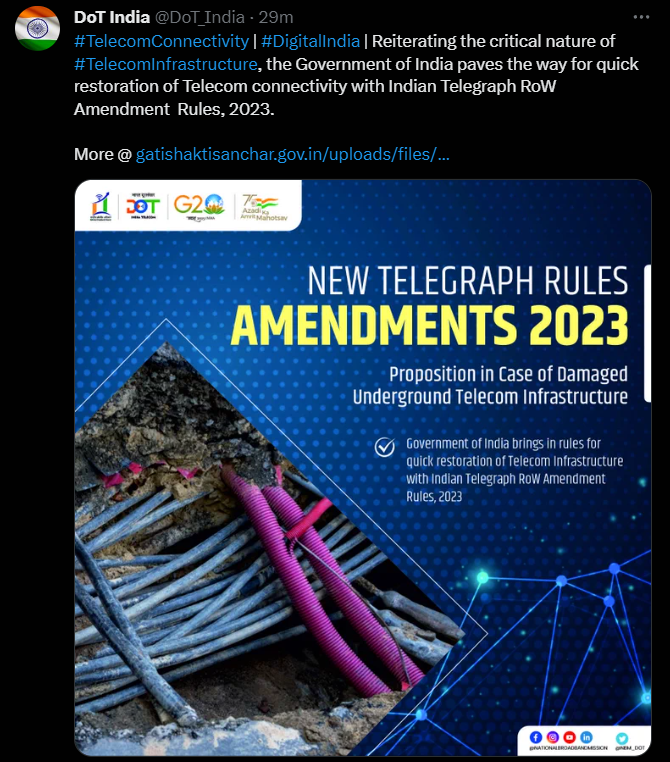
The Cellular Operators Association of India (COAI), an organization representing the Indian telecommunications industry, praised the Department of Telecommunications (DoT) for introducing the Indian Telegraph Right of Way (Amendment) Rules, 2023.
These changes are seen as progressive and forward-looking, aiming to improve the 5G ecosystem and digital connectivity across India.
Continued Improvements for Telecom Infrastructure
These updates build on previous amendments in 2017, 2021, and 2022, which aimed to enhance the telecom infrastructure in India. These changes align with the government’s efforts to improve the business environment in the sector and help the industry maintain and enhance networks more efficiently.

Faster Recovery and Clarity in Regulations
The latest amendment permits telecom license holders to set up temporary above-ground infrastructure when their existing underground systems are damaged. This enables faster restoration of services, preventing significant disruptions. The government has also waived fees for this temporary setup.
The amendment clarifies the definition of Street Furniture, including various structures like poles and signs. This clarity speeds up network deployment.
Indian Telegraph Right of Way Amendment: Boosting Digital Infrastructure
In 2022, the government introduced amendments to support the rapid spread of digital infrastructure, such as small cells, aerial fiber, and street furniture.
Licensees can now submit a single application for multiple sites to set up small cells. Central authorities can deploy small cells on their buildings without administrative fees, with charges limited to power and fixtures.
Appreciating the initiative, Lt. Gen. Dr. SP Kochhar, Director General, COAI said,
We applaud the Department of Telecommunications’ initiative to implement the revised Right of Way rules. This is a progressive move that will accelerate the deployment of 5G services nationwide. The upcoming changes promise substantial benefits for the telecom sector and the nation’s digital connectivity.
They will facilitate swift network restoration in case of damage to underground telecom infrastructure, expedite 5G rollout by leveraging existing state infrastructure, streamline application processes for multiple small cell sites, and allocate central government areas for small cell deployment free of charge.
We are confident that these steps will collectively improve the ease of doing business in the sector and assist in extensive network deployments for pervasive connectivity across the country. However, the actual advantages of these measures will hinge on their effective execution by local authorities. The industry is eager to collaborate with state governments and various agencies to actualize these changes and expedite network deployments.
